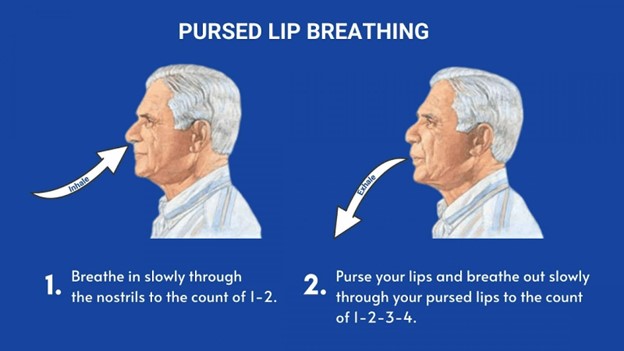A nurse is planning to administer a vaginal suppository to a client. Which of the following actions should the nurse plan to take?
Instruct the client to remain supine for 10 min after the medication is inserted.
Apply sterile gloves after cleansing the perineal area.
Insert the suppository 3 to 4 cm (1 to 1.5 in) into the vagina.
Place the client in the lateral semi-prone recumbent position.
The Correct Answer is A
Choice A rationale:
Instructing the client to remain supine for 10 minutes after inserting a vaginal suppository helps ensure proper absorption of the medication. This position allows the suppository to stay in contact with the vaginal mucosa, promoting optimal drug absorption. This is an essential nursing action to maximize the therapeutic effect of the medication.
Choice B rationale:
Applying sterile gloves after cleansing the perineal area is not necessary when administering a vaginal suppository. While maintaining cleanliness is important, the use of sterile gloves is not typically required for this procedure. Clean, non-sterile gloves are sufficient to maintain aseptic technique during the administration.
Choice C rationale:
Inserting the suppository 3 to 4 cm (1 to 1.5 in) into the vagina is an appropriate depth for vaginal suppository insertion. The nurse should follow this guideline to ensure that the medication reaches the appropriate location within the vaginal canal, optimizing absorption and effectiveness.
Choice D rationale:
Placing the client in the lateral semi-prone recumbent position is not a standard position for administering a vaginal suppository. The suppository is typically administered with the client lying on their back (supine) to facilitate insertion and medication absorption. Placing the client in the position described would not provide the optimal angle for insertion.
Nursing Test Bank
Naxlex Comprehensive Predictor Exams
Related Questions
Correct Answer is A
Explanation
Choice A rationale:
Before initiating teaching for a client with a new diagnosis of type 2 diabetes mellitus, it is essential to identify the client's learning needs. This involves assessing what the client already knows about the condition, their level of understanding, and any specific areas of concern or interest. By establishing the learning needs, the nurse can tailor the teaching plan to address the client's individual requirements, thereby enhancing the effectiveness of the education provided.
Choice B rationale:
While determining the client's literacy level (Choice B) is important, it might not take precedence over understanding the client's learning needs. However, assessing literacy is still relevant because it helps the nurse adapt the teaching materials and language used to ensure the client comprehends the information.
Choice C rationale:
Evaluating the client's readiness for learning (Choice C) is significant, but it should ideally follow the identification of learning needs. Readiness for learning pertains to the client's emotional and psychological state, which can impact their ability to absorb new information. While essential, it should not be the initial step in planning teaching.
Choice D rationale:
Verifying the client's computer access (Choice D) is not directly related to the immediate planning of teaching for a new diagnosis of type 2 diabetes mellitus. While technology and access to online resources can enhance learning, this consideration is secondary to understanding the client's knowledge gaps and preferred learning style.
Choice E rationale:
Identifying the client's learning style (Choice E) is valuable in customizing the teaching approach, but it comes after establishing learning needs. Learning styles, such as visual, auditory, or kinesthetic, can influence the most effective way to present information. However, without first determining what the client needs to know, tailoring the teaching style might not yield optimal results.
Correct Answer is B
Explanation
Choice A rationale:
Lying down while practicing pursed-lip breathing is not the correct instruction. Pursed-lip breathing is usually performed in a sitting or standing position. Lying down can restrict lung expansion and may not effectively support the purpose of this breathing technique, which is to improve airway pressure and reduce air trapping.
Choice B rationale:
"Exhale slowly through your mouth" is the correct instruction for pursed-lip breathing. This technique involves inhaling through the nose for a count of two and exhaling slowly and steadily through pursed lips for a count of four. The goal is to promote better exhalation, prevent airway collapse, and improve oxygen exchange. The rationale behind this choice is grounded in the mechanics of pursed-lip breathing, which helps create backpressure in the airways, maintaining them open and aiding in proper exhalation.

Choice C rationale:
Inhaling through pursed lips contradicts the proper sequence of pursed-lip breathing. The technique involves inhaling through the nose and exhaling through pursed lips. Inhaling through pursed lips would not provide the intended benefits of the technique.
Choice D rationale:
"Puff your cheeks when exhaling" is not the correct instruction. Puffing the cheeks during exhalation does not contribute to the effectiveness of pursed-lip breathing. This action could potentially impede proper exhalation and defeat the purpose of the technique, which is to control airflow and improve breathing efficiency.
Whether you are a student looking to ace your exams or a practicing nurse seeking to enhance your expertise , our nursing education contents will empower you with the confidence and competence to make a difference in the lives of patients and become a respected leader in the healthcare field.
Visit Naxlex, invest in your future and unlock endless possibilities with our unparalleled nursing education contents today
Report Wrong Answer on the Current Question
Do you disagree with the answer? If yes, what is your expected answer? Explain.
Kindly be descriptive with the issue you are facing.
